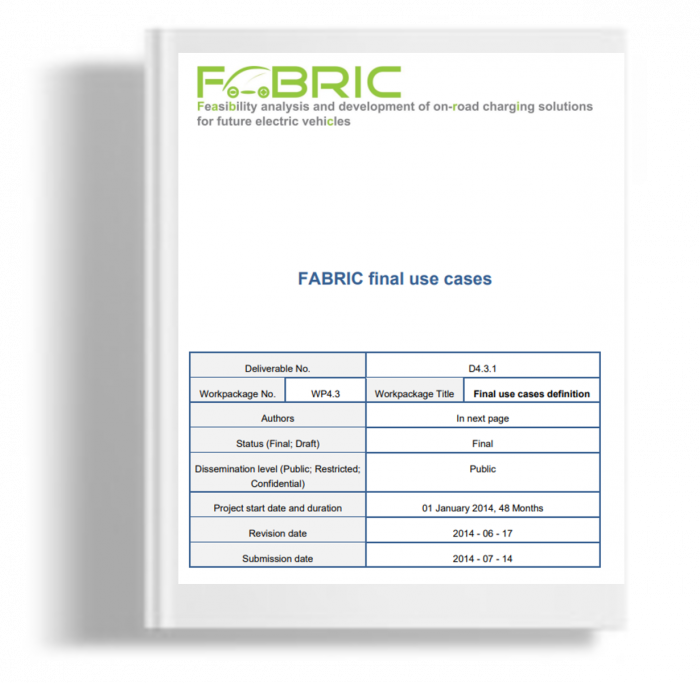Kami menggunakan cookies untuk membuat pengalaman Anda lebih baik. Untuk mematuhi petunjuk e-Pribadi yang baru, kami perlu meminta persetujuan Anda untuk menyetel cookies. Pelajari lebih lanjut .
FABRIC Final use cases
FABRIC aims at studying and facilitating the large-scale integration of electromobility in the global transportation system by developing technologies that will allow the seamless, wireless recharging of EVs even while traveling. This innovation will help increase the autonomy of future EVs and reduce the range-anxiety of potential electromobility adopters which is a major hindering factor for electromobility growth. Another important benefit is the reduction in size and manufacturing cost of EV batteries, which will lower the price of future EVs. The work in FABRIC SP4 focuses on the integration of the ICT components and charging solutions that will be developed during the project’s lifetime in SP2 and SP3 respectively. This deliverable is the outcome of FABRIC Task 4.3.1 “Use cases definition”. Within the document, detailed use cases are defined for the ICT and charging solutions are foreseen in the project for the main end-users of the system: the driver, the Distribution System (grid) operator and the road operator.
- Baca | Unduh PDF
- FABRIC Final use cases
FABRIC aims at studying and facilitating the large-scale integration of electromobility in the global transportation system by developing technologies that will allow the seamless, wireless recharging of EVs even while traveling. This innovation will help increase the autonomy of future EVs and reduce the range-anxiety of potential electromobility adopters which is a major hindering factor for electromobility growth. Another important benefit is the reduction in size and manufacturing cost of EV batteries, which will lower the price of future EVs. The work in FABRIC SP4 focuses on the integration of the ICT components and charging solutions that will be developed during the project’s lifetime in SP2 and SP3 respectively. This deliverable is the outcome of FABRIC Task 4.3.1 “Use cases definition”. Within the document, detailed use cases are defined for the ICT and charging solutions are foreseen in the project for the main end-users of the system: the driver, the Distribution System (grid) operator and the road operator.

